What food education looks like in Cornwall VT
Integrating food studies into schools leads to thinking about interconnectedness in other ares of study. But don’t take my word for it: meet some amazing students from The Cornwall School, in Cornwall VT, who definitely won’t be surviving on Pop Tarts, ramen or mac and cheese when they grow up.
“My favorite root vegetable is probably the beet because you can do so many fun things with it. In a beet salad, you usually have thinly sliced beets with some Feta cheese on it, and sometimes, you’ll add some brussels sprouts or something, like maybe a hard-boiled egg or two on top. Another great thing to do with beets is to put it on a pizza, so pizza crust with a little Maple syrup on top with beets, Feta cheese on it.”
A full transcript follows.
On this episode of The 21st Century Classroom:
Silas:
Say you’re picking apple or buying apple from the store. The apple might come from all the way from Washington and it might be 3,000 miles from where it was picked to where you bought it. But if you buy it from Hannaford’s and you buy one from a farm in Washington, probably 3,000 miles per traveling and one from Sunrise Orchards, the Sunrise Orchards ones will have traveled 13 miles or so. It will be a lot more fresh for eating.
I grew up in Vermont, and my mom was a former Home Ec teacher. Each summer our basement shelves would become lined with jars of murky vegetables. There were refrigerator pickles, apple butter, and canned tomatoes. But I thought it was pretty gross. There was also this vegetable soup that renamed “Puke Soup”– which I have never lived down. I preferred “regular food”, like Jalapeno Flavored NY Deli potato chips and Pop Rocks.
Unfortunately, my college provided kitchens in the dorms, not meal plans. And I was at a loss. I survived on Kraft Mac & Cheese and premade chocolate muffins. And Snickers bars. The only vegetable in sight was pre-made grocery store coleslaw. It was actually pretty gross, too.
But somehow, luckily, I found my way back to the garden, and to food that comes directly from the earth.
So how can we prevent this from happening to current students?
Here in Vermont, we have some amazing opportunities to integrate food into school curriculums.
Best of all, integrating food studies into schools leads to thinking about interconnectedness in other areas of study. But don’t take my word for it: meet some amazing kids who definitely won’t be surviving on pop tarts, ramen, or mac and cheese when they grow up.
Ella: Okay. My name is Ella. I go to Cornwall School and I’m in fifth grade.
Silas: I’m Silas. I’m in the sixth grade at Cornwall School.
Ronan: I’m Ronan. I go to Cornwall School and I’m in fifth grade.
Lily: I’m Lily. I’m in sixth grade and I go to Cornwell School.
Hope: My name is Hope and I go to Cornwall School and I’m in sixth grade.
I’m Emily Hoyler, andI’m especially excited to tell this story, because I had the privilege of teaching these students at the Cornwall School in Cornwall, VT. And the way students study food at the Cornwall School helps ensure these students won’t grow up to be adults with boring palates.
Farm to School & the Food studies project
I spent my first few years as a teacher in Providence, RI. One fall, we took our students to a orchard about half an hour from the city for a field trip. I was pretty surprised that many of the kids had never picked apples before. We brought a big bag of apples back to school, and the next day I brought in my slow cooker. We spent the day chopping apples with plastic knives, and drooling as the smell of apples and cinnamon wafted through the air.
I’ll never forget what happened next.
As we were eating our fresh applesauce, one of my students looked at my in surprise and said, “Miss Emily, this tastes just like the REAL applesauce that comes from the store.”
That experience was when I realized just how disconnected we’ve become from our food systems — and really, from all of the ecological systems that we’re part of. From then on, I tried to help reestablish these connections for my students.
Ella: When I lived in Chicago, I had never tasted a carrot from a garden. I had always had packaged food from the grocery store. When I moved to Vermont, everything was different for me, but it was all great in a good way.
Over the past several years, my students at Cornwall have engaged with food, and the local community and land in a variety of ways.
Each year, I posed a big question to my students, and all year we used the question to make connections between the things we were studying
Silas: The first big question is where did it come from? Where did it go? Say you’re picking apples or buying apples from the store. The apple might come from all the way from Washington and it might be 3,000 miles from where it was picked to where you bought it. But if you buy it from Hannaford’s and you buy one from a farm in Washington, probably 3,000 miles per traveling and one from Sunrise Orchards, the Sunrise Orchards ones will have traveled 13 miles or so. It will be a lot more fresh for eating.
This is Silas, one of Cornwall School’s sixth graders. I’ve had the opportunity to watch him grow and follow his curiosity about all kinds of things through studying local food systems.
Silas: After you eat the apple, the core, if you put it in the trash, when it goes to the trash, it will decompose and release CO2 into the air which is really bad for the air. That’s why the Earth is heating up. The effect is known as the greenhouse effect. It’s why the ice caps are melting and the global temperatures are warming by half a degree a year. The food system is connected to the wildlife because birds will pick up seeds from sunflowers and then they’ll deposit extra seeds in other places which grow more sunflowers which keeps that cycle going. When the birds poop , it fertilizes the soil which helps other native plants grow. That creates a better ecosystem all around. Then, the humans will take the vegetables and other things, and the food scraps that they don’t eat, they’ll compost which creates richer soil, which they then put in the ground to make the plants grow better and larger and healthier. Then, using those local organic plants, it makes the people healthier themselves which just helps the society and everyone.How do we shape the land and how does the land shape us? We shape the land by cutting down trees and planting new gardens and buying animals. The land shapes us by providing us with the nutrients and hills and streams and rivers and the ocean to help us grow and learn.
The Farm to School program in Vermont
One of the ways we tackled integrating food studies in Cornwall is by taking a Farm to School approach. What’s Farm to School?
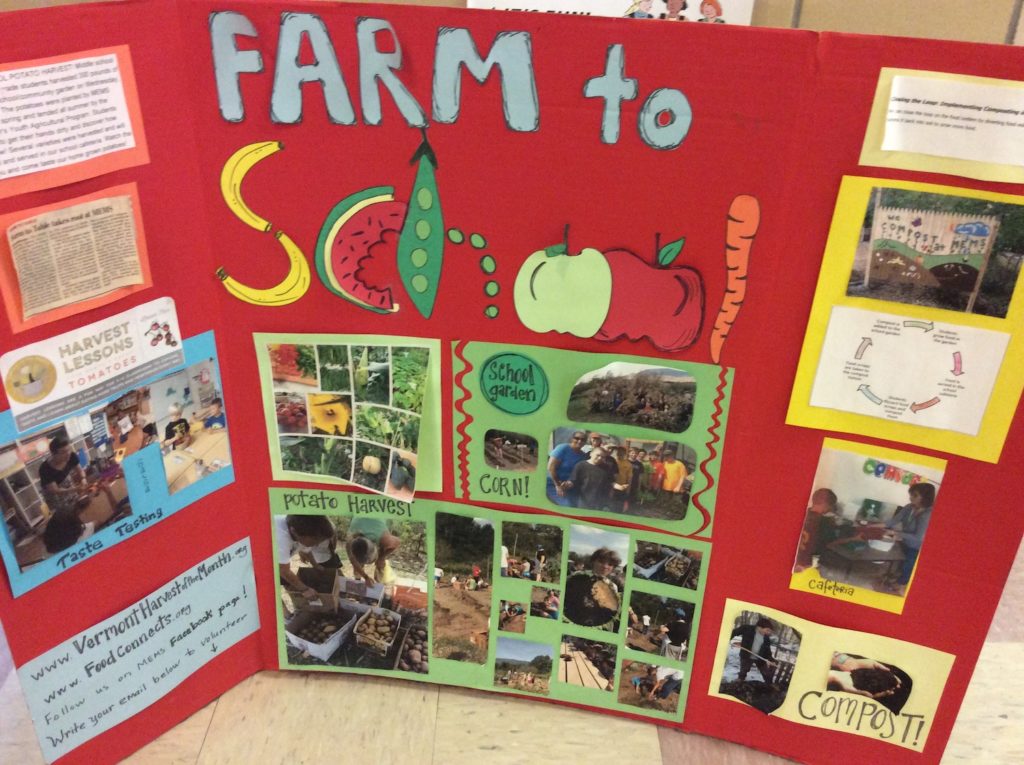
Lily: Farm to School is where… Well, there’s different parts to it. Some things are… Well, schools sometimes take trips to farms and then they gather produce and then bring them back and use some in their kitchen, and other times, it’s where they’re just outside planting things in their school garden if they have one. Then, just using all that fresh produce in their kitchen and eating it, and then just healthy food.
Hope: Well, I guess, it’s really knowing where your food comes from and knowing that it’s not from some place really far away. You may know the person who grew it.
Silas: Farm to School is when a school gets its food from a farm or it has a farm itself and the students go to that farm and learn about where the food comes from and the process of growing the food and what a good farm has, like a sustainable circle of nutrients and air and good food.
I met up with Ryan Morra, who coordinates Vermont’s Farm to School program.
Ryan: Hi. My name is Ryan Morra and I work at Shelburne Farms on our Vermont FEED project, which is our Farm to School project in partnership with NOFA Vermont. Farm to School is a brilliant comprehensive approach to bringing food, farming and nutrition education to students by both developing relationships with local farms in the community where students can be in relationship with those farmers either through field trips or farmers coming in. Also, to help develop those relationships between farmers and the cafeteria to actually try to procure more local whole foods in the cafeteria and involve the community in those efforts which might be through things like taste fests of local foods or community harvest dinners that are really celebrating the local economy and really trying to help kids make better healthier choices and connect to the farming community in their area. In the work that I do for Education for Sustainability, sustainability can be really abstract concept and food is a really great way to try to bring those concepts of sustainability both the economics, the environmental health, the social equity piece to life because food is something that is really universal to our human experience. If you’re only telling kids about the importance of eating healthfully and eating whole foods or how great local food is, if they are not able to access that because of their family or because of their economic situation, it can really be a cognitive dissonance for kids. The cafeteria then can be a place where we want to make sure that they can at least get access to really good whole healthy foods to be able to start making better food choices.
But Ryan’s not just a food education enthusiast. He also was a product of 80s convenience cooking.
Ryan: I remember that from my own experience growing up. I ate a lot of microwaved food, a lot of canned foods, and I just wasn’t exposed to it at home. If the school can be a place for them to experience with whole and health foods, then that’s great. Likewise, if you are working really hard on the cafeteria to serve great local healthy foods but the students have no appreciation for the effort that went into it, they don’t know anything about how the food is grown, they don’t even know why it is good for them to eat that instead of just maybe the frozen chicken nuggets and tater tots which always taste great but we know are not the best things to be eating day in and day out.
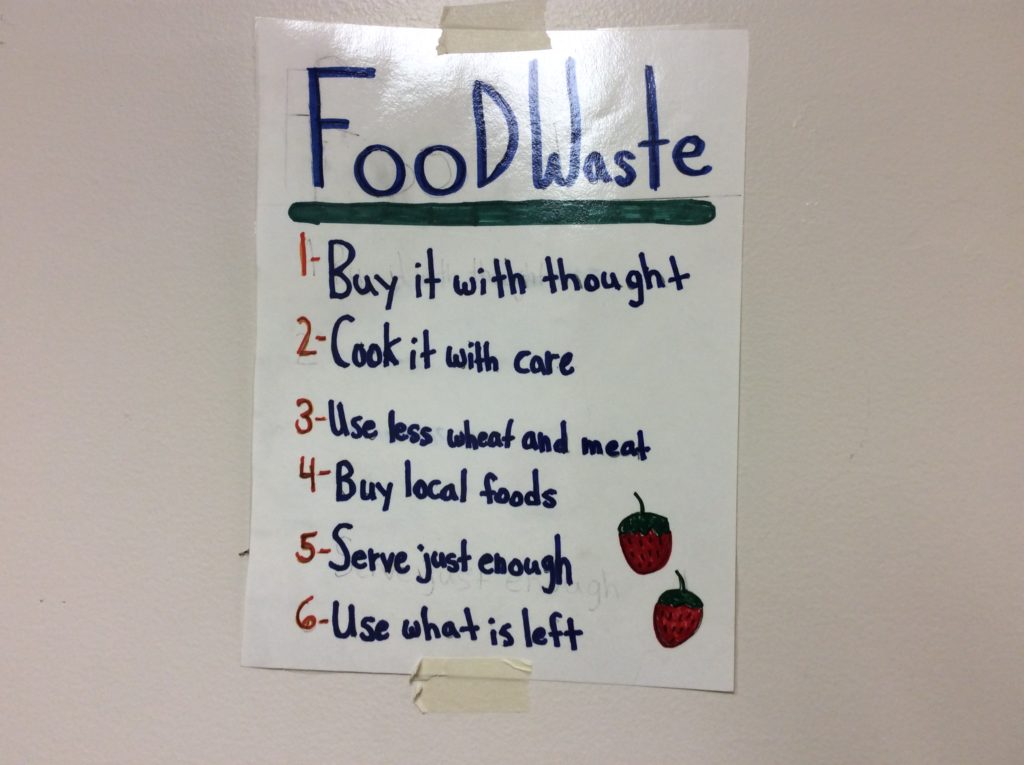
Ella: Well, for me, Farm to School means a lot of things like the chickens and then it also means different foods in our kitchen.
Emily: Have you done a lot of activities with growing food and eating food in school?
Ella: Yes, we do have for the lunches, like there’ll be vegetable or fruit of the month and that will be included a lot in the different things that we’re eating for lunch. In the garden, we have to plant a lot of different fruits and vegetables that we use in the kitchen.
Emily: Have you thought at all about how food and the food system is connected to nature or the economy?
Lily: Well, definitely the economy because with people eating fresh food from the local grocery store, people buy it and then that makes money for people that grow that food. It kind of like a cycle.
VT Jr Iron Chef: The Cornwall edition
This year, for the first time a group of Cornwall students competed in Vermont’s Junior Iron Chef Competition.
Ryan: Yeah. Jr Iron Chef has now become one of our flagships statewide events. It happens at the Champlain Valley Expo, so a big site. You can imagine hundreds, hundreds of people, students from all over the state. When I’m there tabling, I’m talking to kids from every corner, up from the Northeast kingdom down in Bennington, down in Brattleboro, we’re all meeting right up there in Essex, Vermont. School team, they’re all docked out in really bright colors. They wear like little chef coats that are made for middle schooler or high school-sized kids. Sometimes, with like the big poppy hats. They create great team names for themselves and it operates a lot like the iron chef competition where a school team has a coach that’s helping them to create a meal that’s highlighting some sort of local food and is obviously cooked from scratch. They set up over a dozen cooking stations right there in the Expo. It operates just like those competitions where it’s like “Ready, set, cook” and the teams hone their skills in working as a team to create their dish. We have a panel of judges who are restaurateurs, who are chefs of their own right or people involved in school food service serving as the judges and looking at presentation. There’s an award for just how well the team works together and for the taste of it and for creative use of highlighting local foods.
Understandably, the kids were super excited about this.
Ronan: Pretty much every Tuesday, we would get together and the first day, we are just thinking about things we could do looking over the rules for the Junior Iron Chef competition. We didn’t really figure out what we were going to do the first day. The next week after that, we looked at some other things and we tested to different ideas and picked one. We were thinking… So, we tested dumplings and crepes. We like dumplings some more. They seemed a little more doable, I guess. Then every week after that, we would practice with new things. On the last practice, we… two last practices, we had papers and we had different jobs.
Hope: Yes. So, they were mushroom dumplings with carrot and cabbage, and so the mushroom was… mostly that’s what you can mostly taste in the dumpling. A little bit of… You can’t really taste the carrots, but when you like bit into it, you could see little orange pieces. They were in like a vegetable broth with tiny little chunks of different vegetables. There was also like a little thinly shaved-like garnish salad which was really nice because it was clear-ish almost and pale, but very bright at the same time with the radish and the cucumber and the carrots. We had fresh grown microgreens. It was really fun. It was spicy, but it was also like… spicy and rich almost. It was really good. We had to communicate and be careful because there was like fire and knives and… We started, and we had to just fairly cook the ginger in a pan, and then my teammate realized that it was overcooked. We’re like, “Oh, no, we have to do it again.” I was like, “Okay. I’ll start recutting the ginger and get more,” and the rest of us were multitasking anyways because one of our team members came in sick that morning. It was like we thought we weren’t going to make it because we had extra to do. We burnt the ginger and we actually came in with like 10 minutes to spare.


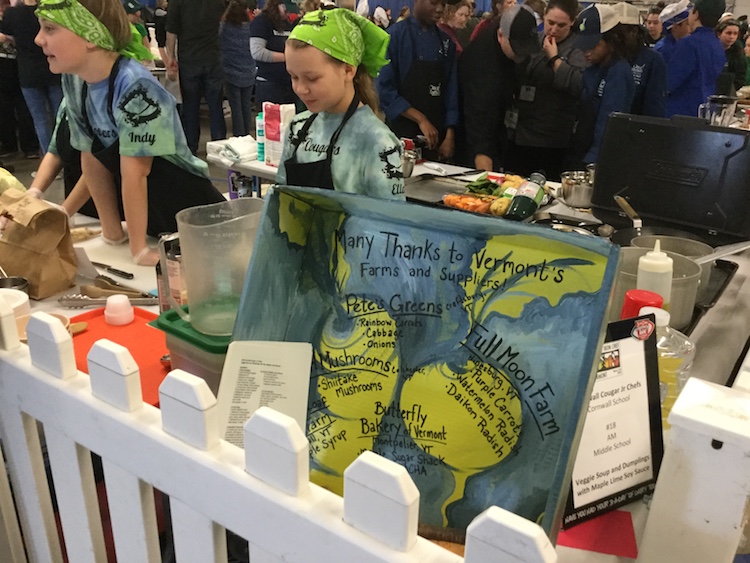
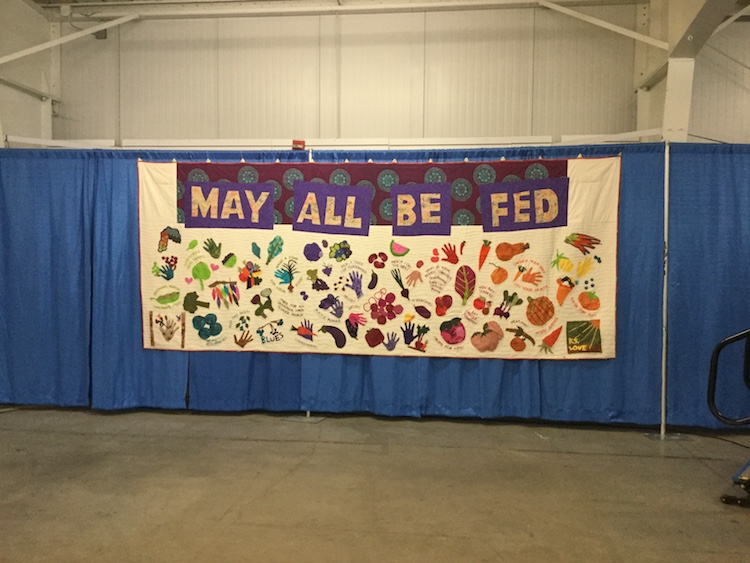
Hope: Well, yes, I guess. I mean, in the competition, we didn’t win, but we enjoyed it enough that it was worth it. I’d do it again even if… since we didn’t win, we got close. We learned how to work as a team and that was important.
Food teaches us about more than food, it teaches us about interconnectedness
Remember Ella, who’d never tasted a garden-fresh carrot before moving to Vermont? One of the food-related projects she worked on took her not just around the world, but to her own back yard as well.
Ella: Well, to make food, usually, there’s a story behind it where it comes from and how it got there, how like serve… I forget who did this, but someone did, I think, how noodles are made in China, but then it went to Italy and lots of other sort of things where the food travels. We also learned about where the ingredients come from.
Ella: Well, my family is half-Ukrainian. So, one of our celebrations is at Christmas, we have a special dinner of different Ukrainian soups like borscht and pierogis, but my favorite that we serve in the beginning is Gouda. It’s wheat, water, honey and poppy seed mixed, and I decide to learn more about it and find how my family came from Ukraine to Canada.
And that’s not the only overlap.
Emily: Do you ever use food to learn in Social Studies or Science?
Hope: Yes, we have. In third grade, we did where there was a bunch of… we had to trace where different apples came from, some from local farms and some from Washington State.
Emily: What did you discover?
Hope: Well, fresh apples can be better for you. They don’t have to have these many preservatives because it doesn’t have to travel all the way from one side of the country to the other and… Yes.
Emily: What were some of the other impacts of food traveling so far? Do you remember?
Hope: There was the carbon footprint and it used up just more gas and it just didn’t help the environment in general, whereas if it comes from a couple of towns over, it’s going to take half an hour to get here, and that’s not using very much gas or things and all.
Silas: One of the favorite times that I had with the Farm to School thing was building the compost and then playing with the doors because they had the concrete block on the end. It was really easy to open and close them.
Emily: Sounds like physics.
Silas: It was. It is physics. Then, I really liked planting the garlic and picking the tomatoes, and when they were bad tomatoes, we would throw it into the field. It was really fun.
Why listen to me? Why listen to these students?
Because THE PROOF IS IN THE PUDDING. (ha!)
Back at Cornwall School, I stayed for lunch, and over squash parmesan, garlicky spaghetti, and salad greens with maple vinaigrette, made with ingredients fresh from Cornwall’s gardens, the kids and I chatted about the impact all of this interaction with food has had on them, and what they like to cook, and what they like to eat.
Ella: I really like watermelon and cucumbers. I really like cooking foods from different places, like sometimes I like to cook Chinese or Thai or anything that is appealing.
Hope: I wouldn’t have eaten mushroom dumplings if I hadn’t known what’s in them. I would have thought that just sounds gross. But when you know what goes into something, you can understand that it’s okay.
Silas: Some of my favorite vegetables to eat are squash, like spaghetti squash and delicata squash. One of my favorite things to eat is definitely snap peas and sugar peas because they’re really fun to snap and then eat each little pea individually. My favorite root vegetable is probably the beet because you can do so many fun things with it. In a beet salad, you usually have thinly sliced beets with some Feta cheese on it, and sometimes, you’ll add some brussels sprouts or something, like maybe a hard-boiled egg or two on top. Another great thing to do with beets is to put it on a pizza, so pizza crust with a little Maple syrup on top with beets, Feta cheese on it.
And like I said, I don’t think these kids will be surviving on mac & cheese as young adults, either. Here’s Silas’ final thoughts on the subject:
Silas: When I grow up, I will definitely be buying more local and organic foods so that I’m healthy and that I know that it’s not processed food. Definitely, that they don’t wax the apples which is really bad for you and only it helps the cosmetics. Probably also, fruits, how good it is for you definitely. They don’t use pesticides on the apples which could be really bad for human if they ate it because it’s a poison.
The 21st Century Classroom is a podcast of the Tarrant Institute for Innovative Education at the University of Vermont. A huge thank you to the students at The Cornwall School, as well as Ryan Morra and the amazing team that pulls off VT Jr Iron Chef each year. Our theme music is, as always, by dirtwire. Additional music in this episode appears courtesy Diana Gruber, Kabbalistic Village, and Nicolai Heidlas. Thank you, as always, for listening.
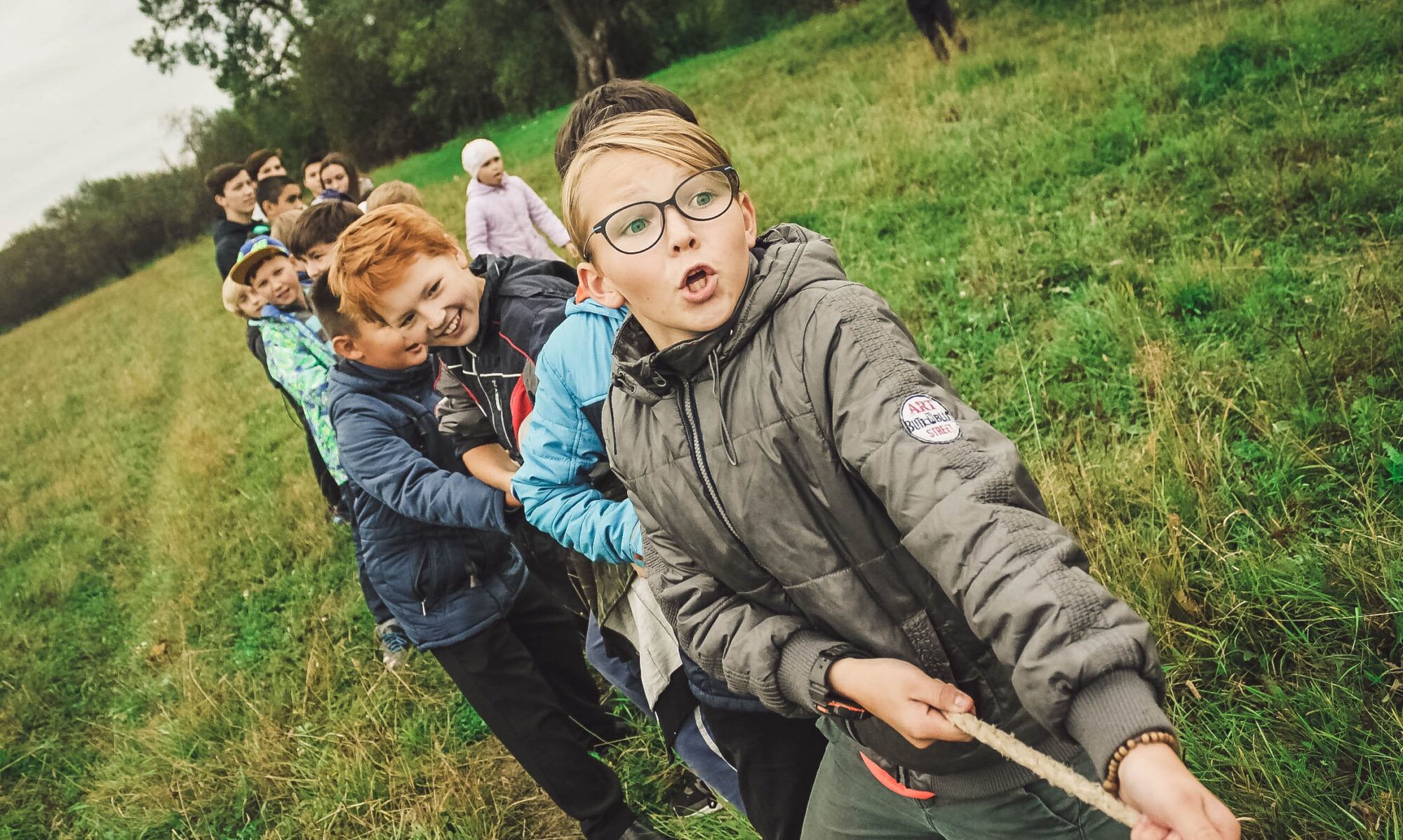


Good info. Lucky me. I reached your website by accident & bookmarked it. The blog was, how do I say it… relevant, finally something that helped me. Thanks.